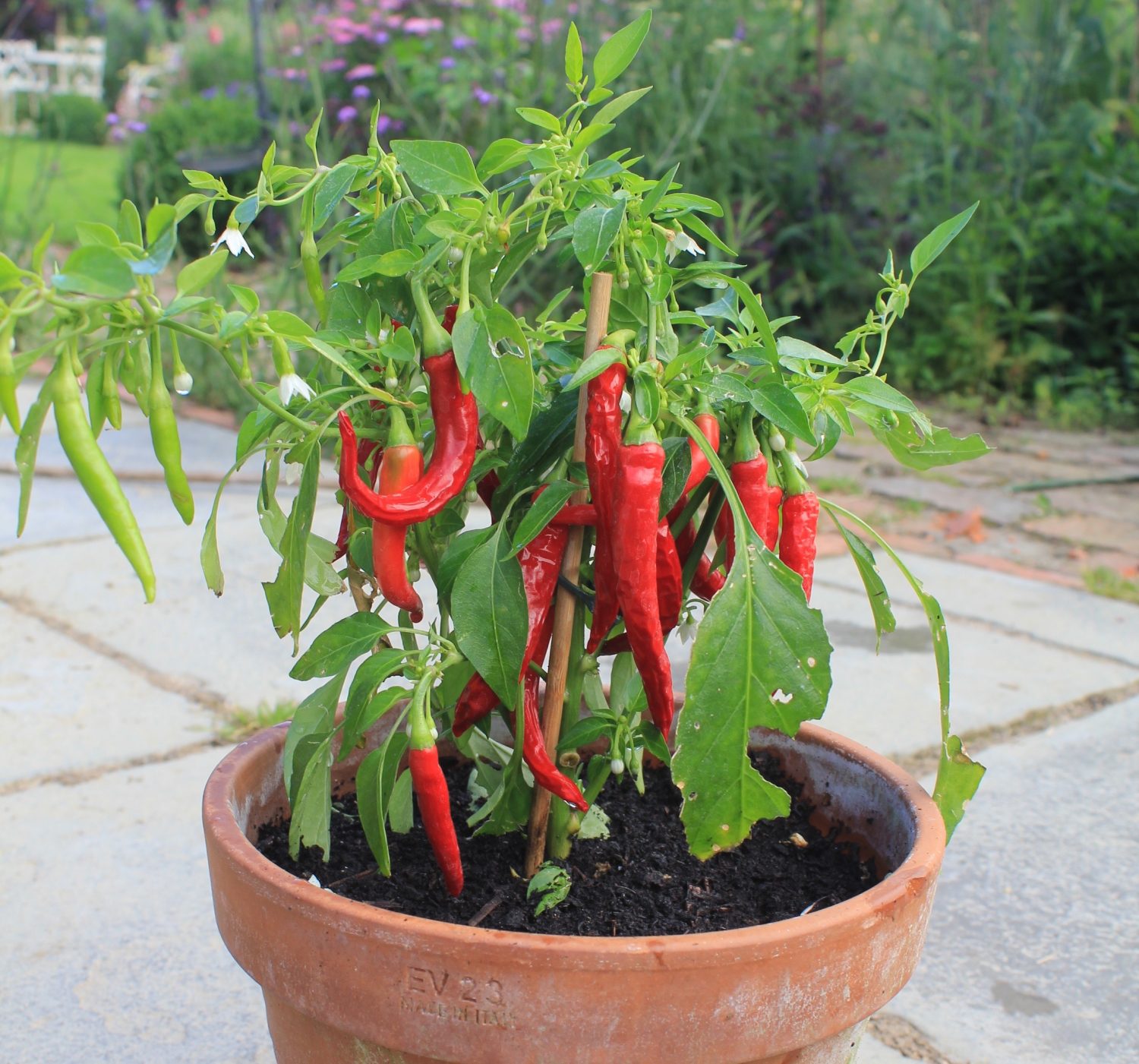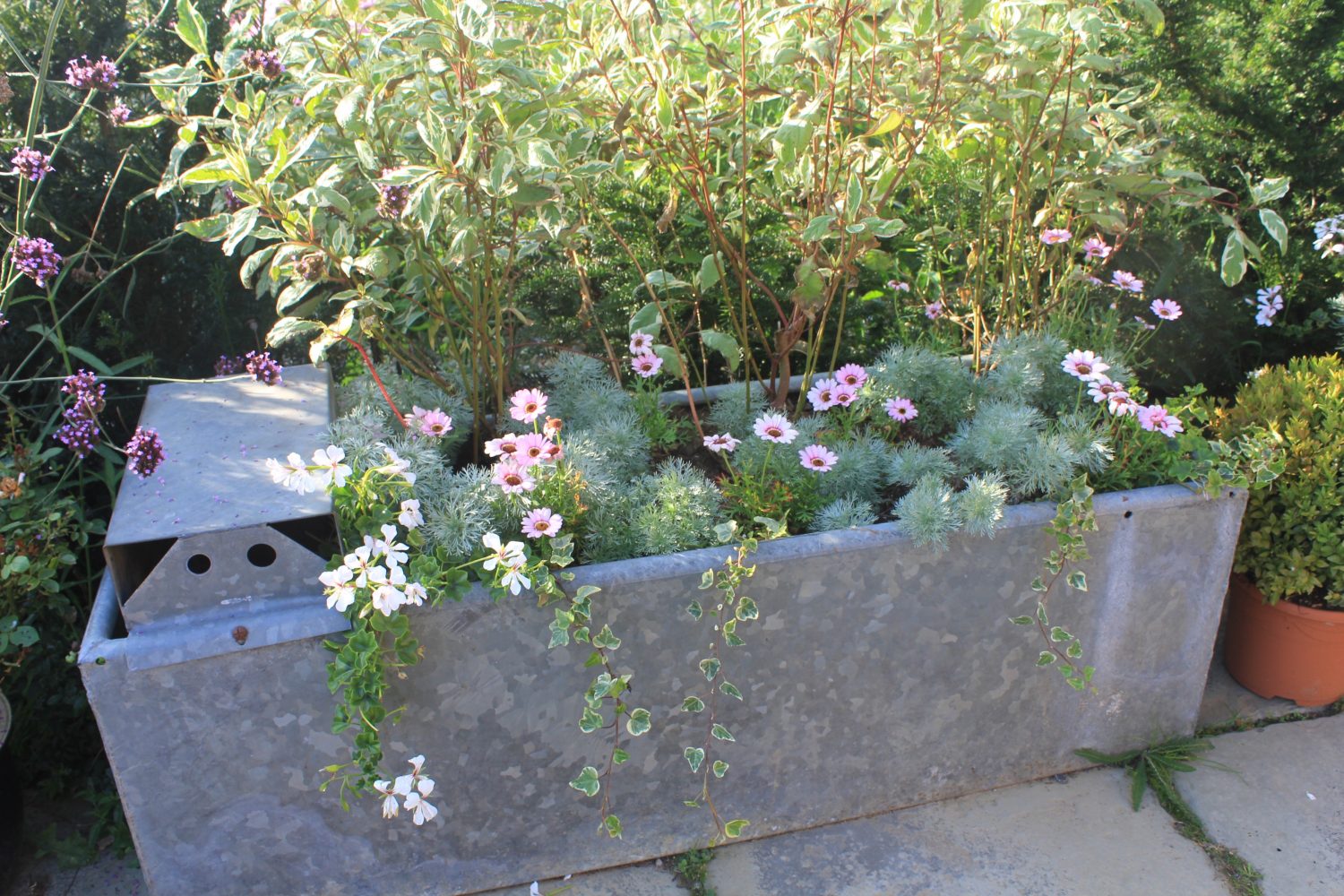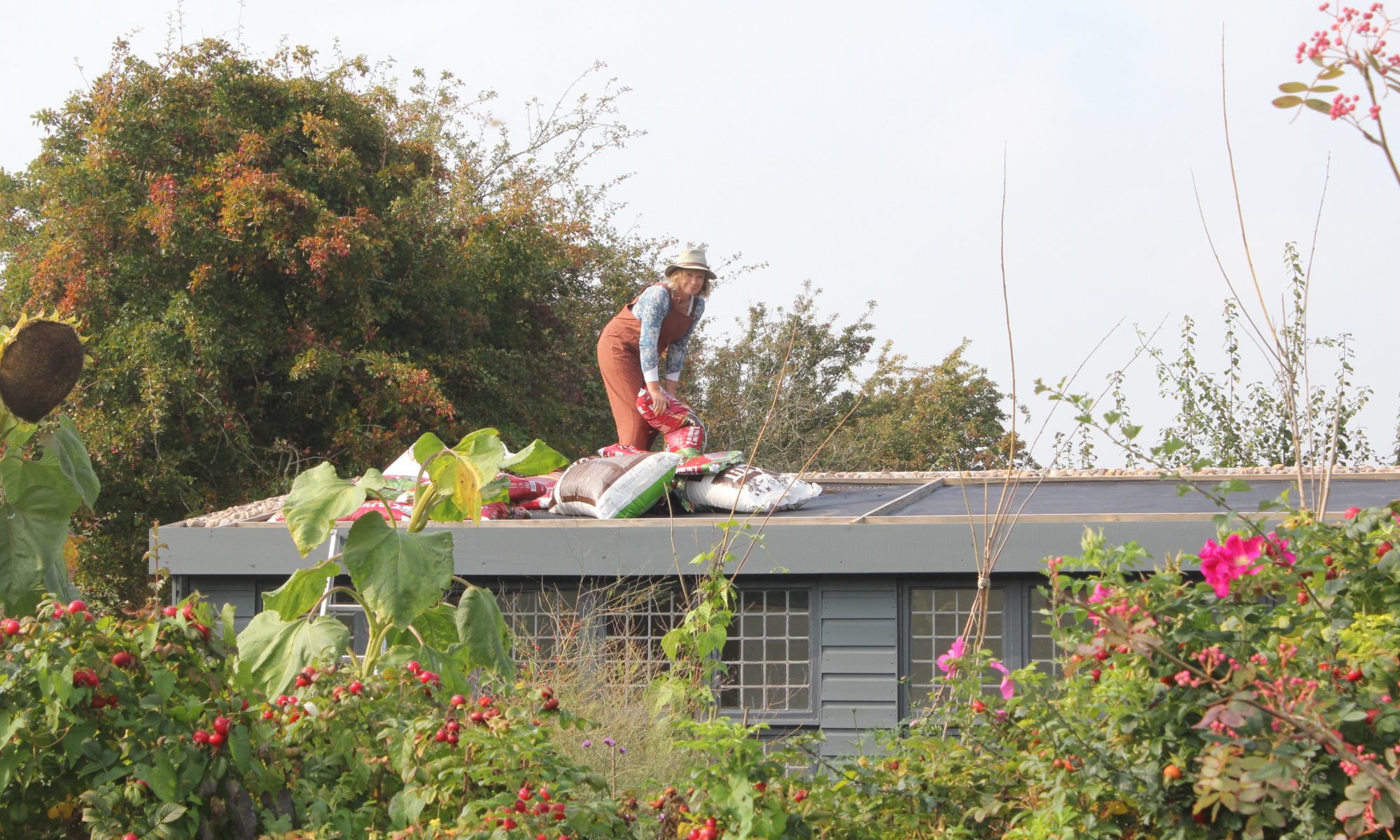Jo Arnell makes sure mini spaces pack a productive punch
Give me land, lots of land under starry skies above…’ Well, sadly most of us do have to have fences and aren’t able to ride through the plains on a whim, but we don’t have to let the size of our plot dampen our dreams. For those of us lucky enough to have a scrap of outdoors, no matter how tiny, there are ways of turning it into a haven, a place of sanctuary and creative expression from which to view the starry skies. Even a window sill can be transformed into a mini paradise, given the right containers, plants and care. There is no need to scale down the planting either – large plants have dramatic impact in small spaces. So whether you have a courtyard, balcony or just a hanging basket, be bold, think big and make a plan to plant up a small space.

Courtyard gardens
These are often enclosed spaces surrounded by buildings or walls and so can be on the damp and shady side, especially in the winter. This may limit planting choices, but as the summer heat arrives, a cool and verdant oasis amid the heat and dust becomes wonderfully welcome – like a mini forest bath.
The sort of plants that will like damp shade are ferns, dark, glossy-leaved evergreens and woodland perennials. Leaves tend to be a deep shade of green because they are rammed with chlorophyll to make the most of what light does hit them and a shiny surface helps to enhance their light capturing quest. Edge of woodland shrubs and trees – with the walls around the courtyard mimicking the deep shade of a dense canopy, will thrive – evergreens like skimmia, Viburnum tinus, and (if your soil or containers are suitably acidic) Camellias, Azaleas and Rhododendrons.
Leaves may be large and lush looking, as a bigger leaf increases the surface area for capturing light and transpiring moisture. Fatsia japonica is a handsome example with big glossy palmate leaves. It’s really easy to grow and looks impressive. Underplant a fatsia with hostas and ferns for an instant, but hardy jungle.
If you would rather have an elegant miniature woodland than a lush tiny jungle, try planting small multi-stemmed trees, or raise the canopy of large shrubs to create a similar effect. Make it more formal by incorporating topiary and tightly clipped small-leaved evergreens.
Be careful using colour in a shady environment, as deeper hues and reds will not show up. The best colours for a shady corner are pale pastels, creams and whites, which sing out from the twilight zones. Fortunately nature thought of all this before us and you will find that most shade-loving flowering plants have pale flowers – and joy of joys, many are scented too. This is to attract beetles and night flying insects like moths, but is alluring to us too, especially in an enclosed space, as the fragrance will stay around for longer.
If your courtyard is sunny, the options increase. It is likely to be warm and sheltered and will retain heat if surrounded by brick walls. You can go Mediterranean and incorporate olives, bays and aromatic herbs like lavender and rosemary, ramp up the colour with geraniums, cystus and salvias. If you can create overhead shade and increase the humidity, then a tropical paradise becomes a possibility.
Balconies
A balcony could be anything from a high-rise mini courtyard, or roof terrace, to a glorified window sill, but because it is a raised structure, there will be some important considerations to bear in mind before you pack it out with plants.
One of the main issues is the wind. We’ve had some windy enough conditions at ground level recently, so do make sure that containers are secure and that plants are robust enough to stand up to a barrage. Taller, tougher plants can act as shields and climbers can be used to weave around railings and provide some cover. With any luck, once the bigger plants and climbers have established, a more sheltered microclimate will have been created so that slightly more tender specimens will flourish.
Watch your weight. Containers, once filled with plants and soil, and especially if they are made from stone or terracotta, will be very heavy, so do check weight restrictions. When we made a living sedum roof on top of my workshop room a few years ago, we used a 50:50 mix of Perlite, which is a very light volcanic rock, and multipurpose compost, rather than heavy soil. On a smaller scale, the tops of bin stores and bicycle sheds can also be turned into living roofs and micro-meadows. This sort of thing could really bring benefits to urban wildlife – and be more pleasant for the humans to look at too.

Container planting
Most of us have room for a few pots, whether that’s on a scrap of paving, by the front or back door, or on a window sill. Container planting is a great way to celebrate the changing seasons, and you can easily ring in the changes by adding in bedding plants to keep your displays looking perky all year.
Window boxes
Circumstances dictate that a window box – designed to fit on a window ledge, is never going to be huge – and will most likely be long and thin, so the plants you choose will either be compact by nature, or seasonal and easily changed once they run out of root room. Window sills are not necessarily standard sizes, so make sure that you measure the space before buying a box. They can be made from a multitude of materials and in a range of styles to suit tastes. As with balconies, you may have to think about the weight issue too and conversely, if they are lightweight, or prone to drying out, they may need to be secured to stop them falling off the sill.
Annual bedding plants work well in window boxes, but permanent plantings will also manage, given the right conditions and care. Dwarf conifers, small evergreens and sub shrubs like gaultheria, box, trailing ivy and small ferns will work well in shade, while lavender, aubretia and erigeron will thrive in a sunny spot.
Crops in pots
You don’t need to have a dedicated plot or an allotment to grow a few edibles. There are lots of vegetable plants that will grow in smaller spaces and containers. The best plants to choose are those that you can keep cropping – French beans, salad leaves, tomatoes and courgettes. Dwarf varieties are great too – chanteney carrots, dwarf beans and spring onions are quick and reliable to grow. You could even plant an edible hanging basket with cherry tomatoes and salad, or trailing strawberries. Just remember to feed and water them well, as edible crops need lots of both.
A planter of mixed herbs will need less maintenance and if you grow shrubs like rosemary, oregano, thyme and sage, they will last for years, staying young and fresh looking if you keep trimming them through the growing season – think herbal exfoliation.
Alpines and succulents
Alpines and sun-loving succulents are ideal for containers as the plants are usually small and compact (although some will clump up and spread fairly quickly). These trendy little plants are very easy to grow, providing you plant them in free-draining soil – in fact they don’t need much soil at all. The common name for the popular sempervivums is the ‘house leek’ – so called because they were apparently once used to plug holes in thatched roofs. They look great either on their own in small pots or in groups in large shallow containers – old ceramic sinks make great containers for alpines and succulents. Many outdoor succulent plants are surprisingly hardy, but should be moved under cover for the winter. Like many of us, they will not appreciate the cold, soggy conditions that English winters bring.
Plants are beautifiers, purifiers, and mood lifters. We need them – and whether you have a garden or not, however small a space, we can always make room for some plants.
Join Jo for a Gardening Course in her garden in Woodchurch, Kent.
For more information, call 07923 969634 or see hornbrookmanor.co.uk
You may also like
In the Night Garden
Jo Arnell explains how to make the most of your outdoor space once darkness falls Some enchanted evening you may see me outside – mainly searching for slugs in the garden, because the cool hours of night are when they...
Contain your excitement
Jen Stuart-Smith discusses how to get creative with your pots and planters My love affair with plants started with houseplants when I was a child. As my bedroom windowsill overflowed – resulting, occasionally, in waking up with compost under my...
More than just a pretty face
Jen Stuart-Smith explores the multiple uses of some easy-to-grow garden favourites When you grow flowers for their beauty, shape and colour it can be easy to forget all the other qualities they have to offer. Some are edible, others provide...










